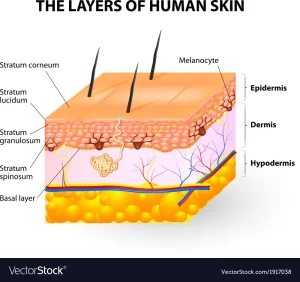 Originate from the neural crest and differentiate and hone to skin and other organs.
Originate from the neural crest and differentiate and hone to skin and other organs.
Exist in a hypoxic environment and rely on neighboring cells keratinocytes and inflammatory cells for growth factor signaling.
Melanin is an organic pigment that produces most of the color seen in people.
Melanin comes in two color ranges, eumelanin: producing dark browns and blacks and pheomelanin: producing light reddish tans and blondes.
The production of melanin occurs in melanocytes in a complex process involving the enzyme tyrosinase.
The gene that codes for the presence of tyrosinase in cells, is the TYR gene.
If the TYR gene is altered or damaged, melanin cannot be reliably produced and an albinism occurs.
Chief function is the secretion of melanin pigment which serves as an antioxidant, free scavenger and protects skin cells from carcinogenic changes from UV light.
Melanin’s roles: absorbs UV wavelength light, and acting as a photoprotectant.
Melanin prevents UV photons from disrupting chemical bonds, and inhibits both the direct alteration of DNA and the generation of free radicals, thus indirect DNA damage.
Fair skinned people have reduced melanin production compared to darker skinned individuals.
Pigment production in the skin is controlled by the melanocortin 1 receptor (MC1R) in melanocytes, the melanin producing cells.
Produces melanin a brown-black pigment and found mostly in the epidermis.
People have approximately the same number of melanocytes regardless of race.
Melanin functions in the normal development of various parts of the eye, including the iris, retina, eye muscles, and optic nerve.
The absence of melanin results in abnormal development of eyes and leads to: problems with focusing, and depth perception.
Melanin protects the skin from ultra-violet radiation in sunlight.
Melanosomes block harmful electromagnetic radiation from the sun while allowing beneficial frequencies to enter the body.
